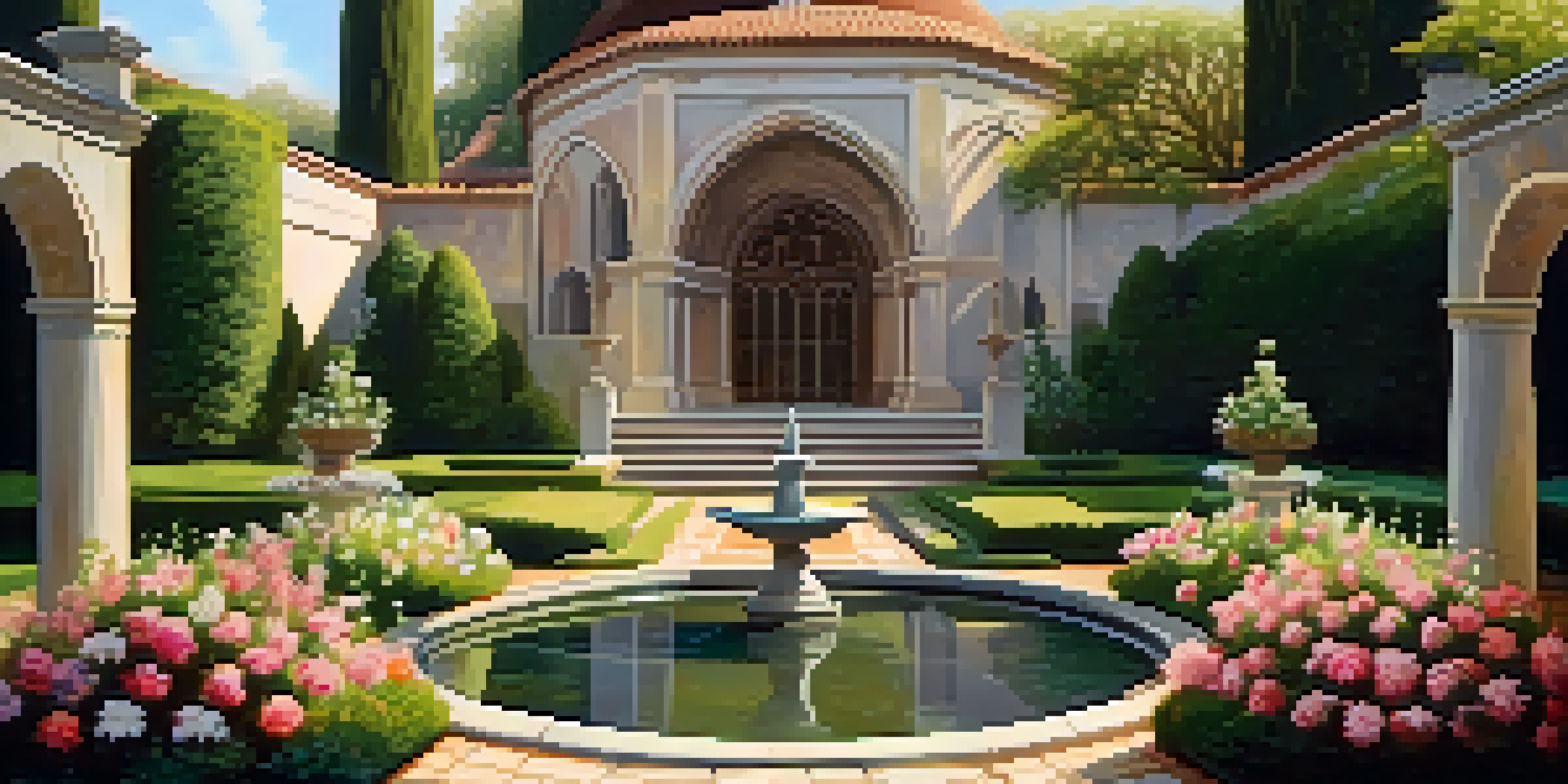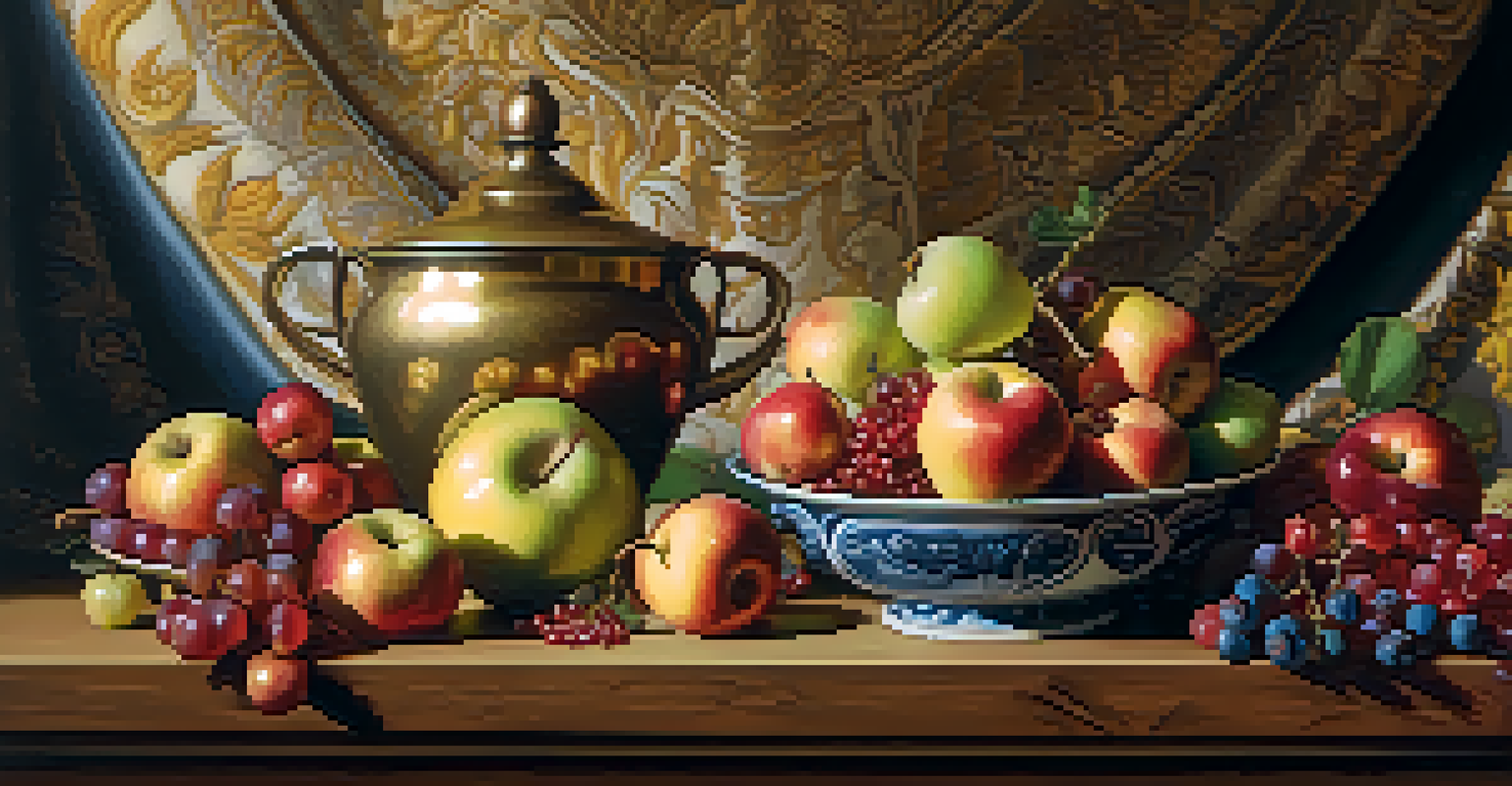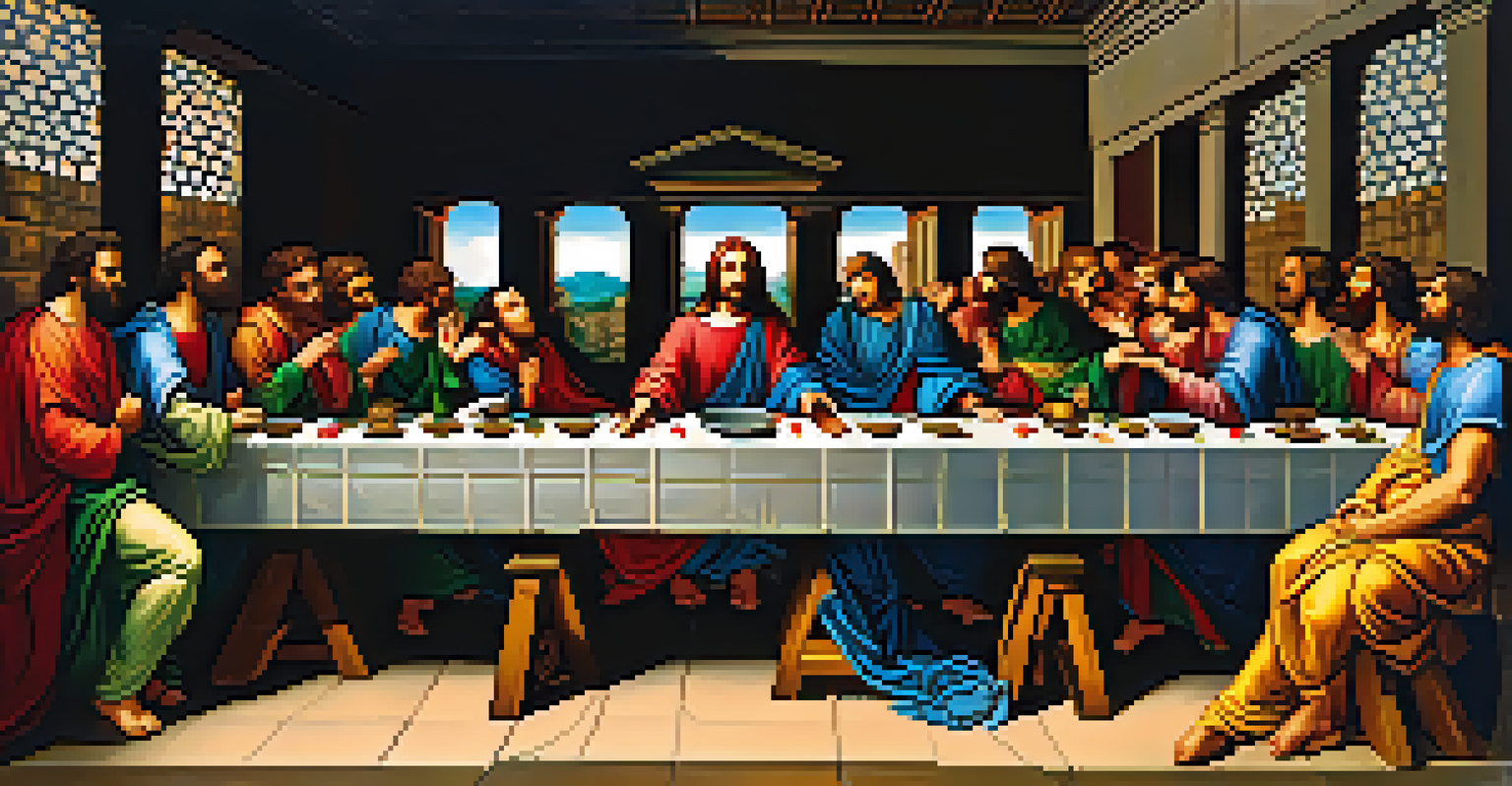Exploring Iconography in Renaissance Religious Paintings

Understanding the Role of Iconography in Art
Iconography is the study of symbols and images in art, particularly how they convey deeper meanings. In the context of Renaissance religious paintings, it plays a vital role in communicating the spiritual messages intended by the artists. Each element, from colors to figures, was carefully chosen to resonate with the viewer's faith and understanding.
Art is the most beautiful of all lies.
For instance, the use of light often symbolizes divine presence, while specific colors can represent virtues or vices. Understanding these symbols allows us to appreciate the artwork not just as a visual experience but as a narrative rich in religious significance. This exploration of iconography helps us bridge the gap between the viewer and the intended message of the artist.
As you dive deeper into Renaissance art, you'll find that these symbols are not arbitrary; they are part of a larger dialogue between the artist, the viewer, and the divine. Recognizing the role of iconography invites us to engage more profoundly with the artwork and its historical context.
Key Symbols and Their Meanings
In Renaissance religious paintings, specific symbols carry significant meanings. For example, the lamb often represents Jesus Christ, symbolizing innocence and sacrifice. Similarly, the presence of a halo indicates holiness, commonly found around the heads of saints and divine figures.

Another common symbol is the use of fruit, particularly apples, which can represent the fall of man due to original sin. These carefully selected symbols create a visual language that communicates complex theological ideas in a way that is accessible to the viewer. Understanding these symbols enriches our interpretation of the artwork.
Iconography's Role in Art
Iconography is essential in Renaissance art, as it uses symbols and images to convey deeper spiritual meanings.
By recognizing these symbols, we can see how Renaissance artists crafted their narratives to reflect the religious beliefs of their time. This symbolic language serves as a powerful reminder of how art can convey profound truths, transcending the boundaries of time and culture.
The Influence of Religion on Artistic Choices
Religion profoundly influenced the artistic choices made during the Renaissance. The Church was a significant patron of the arts, commissioning works that reflected its doctrines and ideals. This relationship between religion and art fostered a unique environment where artists could explore their creativity while adhering to specific themes.
Every artist dips his brush in his own soul, and paints his own nature into his pictures.
Artists like Michelangelo and Raphael infused their works with religious narratives that appealed to the viewers' spiritual sensibilities. For instance, the Sistine Chapel's ceiling not only showcases breathtaking artistry but also conveys key biblical stories through its intricate iconography. This intersection of faith and art created masterpieces that continue to inspire.
Understanding this influence helps us appreciate the context in which these works were created. The interplay between religious motivations and artistic expression made Renaissance art a powerful medium for conveying spiritual truths and moral lessons.
Case Study: The Last Supper
One of the most iconic examples of Renaissance religious painting is Leonardo da Vinci's 'The Last Supper.' This masterpiece is rich in symbolism and reflects the moment Jesus announces his betrayal. Each figure is meticulously positioned, with their expressions and gestures conveying a range of emotions from shock to sorrow.
The use of perspective in this painting creates a sense of depth, drawing the viewer into the scene. Moreover, the placement of Judas on the same side of the table as Jesus, clutching a bag of silver, underscores the gravity of his betrayal. Such details highlight how iconography shapes our understanding of the narrative.
Symbolism Enhances Interpretation
Understanding specific symbols, like the lamb for Jesus and color meanings, enriches our interpretation of Renaissance religious paintings.
By analyzing 'The Last Supper,' we see how Da Vinci employed iconographic elements to enhance the story's emotional impact. This painting serves as a testament to how well-executed iconography can elevate a work of art, making it resonate with audiences across generations.
Color Symbolism in Renaissance Art
Color plays a pivotal role in Renaissance religious paintings, often serving symbolic purposes. For example, blue is frequently used to represent the Virgin Mary, symbolizing purity and divinity. The choice of color is not merely aesthetic; it adds layers of meaning that enrich the viewer's experience.
Additionally, red can signify martyrdom or the love of Christ, while gold often represents divine light and glory. These color choices create a visual hierarchy, guiding the viewer's attention to the most important figures and themes within the composition. Understanding this color symbolism is key to interpreting the emotional and spiritual messages in the artwork.
By appreciating the significance of color in Renaissance religious paintings, we can better understand the artists' intentions. This aspect of iconography enhances our engagement with the art, revealing the deeper layers of meaning hidden within each brushstroke.
The Evolution of Iconography Over Time
Iconography in Renaissance religious paintings evolved significantly from earlier periods, reflecting shifts in societal beliefs and artistic styles. The transition from the flat, symbolic representations of the Middle Ages to the more naturalistic forms of the Renaissance marked a pivotal change. Artists began to focus on human emotion and physicality, making religious scenes more relatable.
This evolution can be seen in the way figures are portrayed with depth and perspective, allowing viewers to connect with the subjects on a personal level. The incorporation of everyday elements and realistic settings in religious art made the divine more accessible to the average viewer. This shift highlights the Renaissance's embrace of humanism and the importance of individual experience.
Legacy of Renaissance Symbolism
The influence of Renaissance iconography continues to shape modern art, demonstrating the enduring power of visual symbolism to convey profound messages.
As we explore this evolution, we begin to appreciate how cultural and historical contexts shape artistic expression. Understanding the progression of iconography enriches our understanding of how artists responded to their times, making their works resonate with contemporary audiences.
The Legacy of Renaissance Iconography
The legacy of Renaissance iconography continues to influence modern art and religious imagery. Many contemporary artists draw inspiration from the rich symbolism and themes that emerged during this period. The use of iconography has evolved, yet its core purpose remains—to convey deeper meanings and provoke thought.
For instance, modern interpretations of religious themes often revisit the iconographic elements of the Renaissance, reimagining them in new contexts. This ongoing dialogue between past and present allows artists to explore timeless questions of faith, existence, and morality. The impact of Renaissance iconography is evident in various forms of art, including film, literature, and visual media.

Reflecting on this legacy, we can appreciate how Renaissance religious paintings laid the groundwork for future artistic explorations. The enduring relevance of these symbols and themes serves as a reminder of the power of art to transcend time and speak to the human experience.